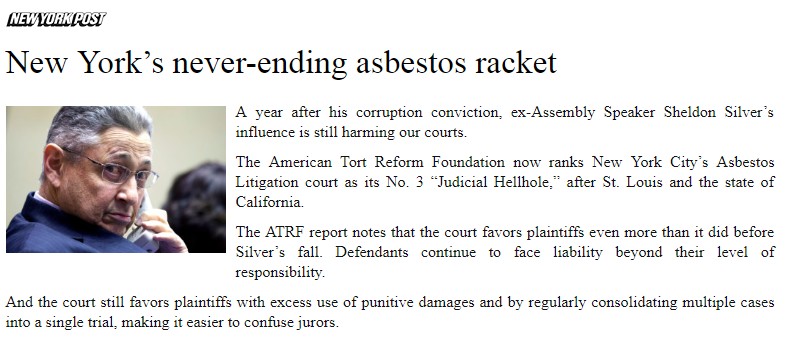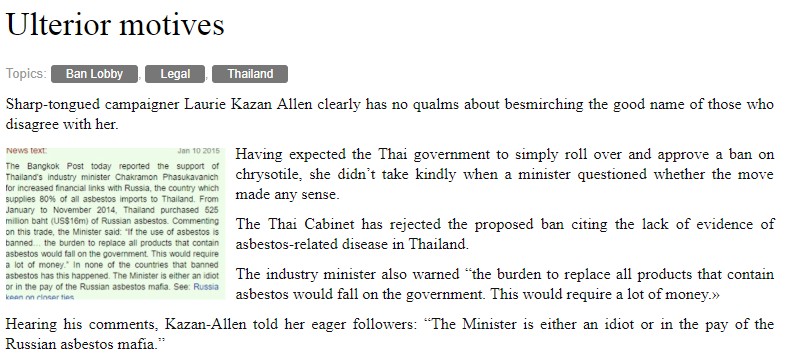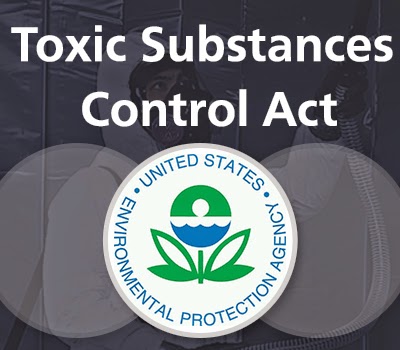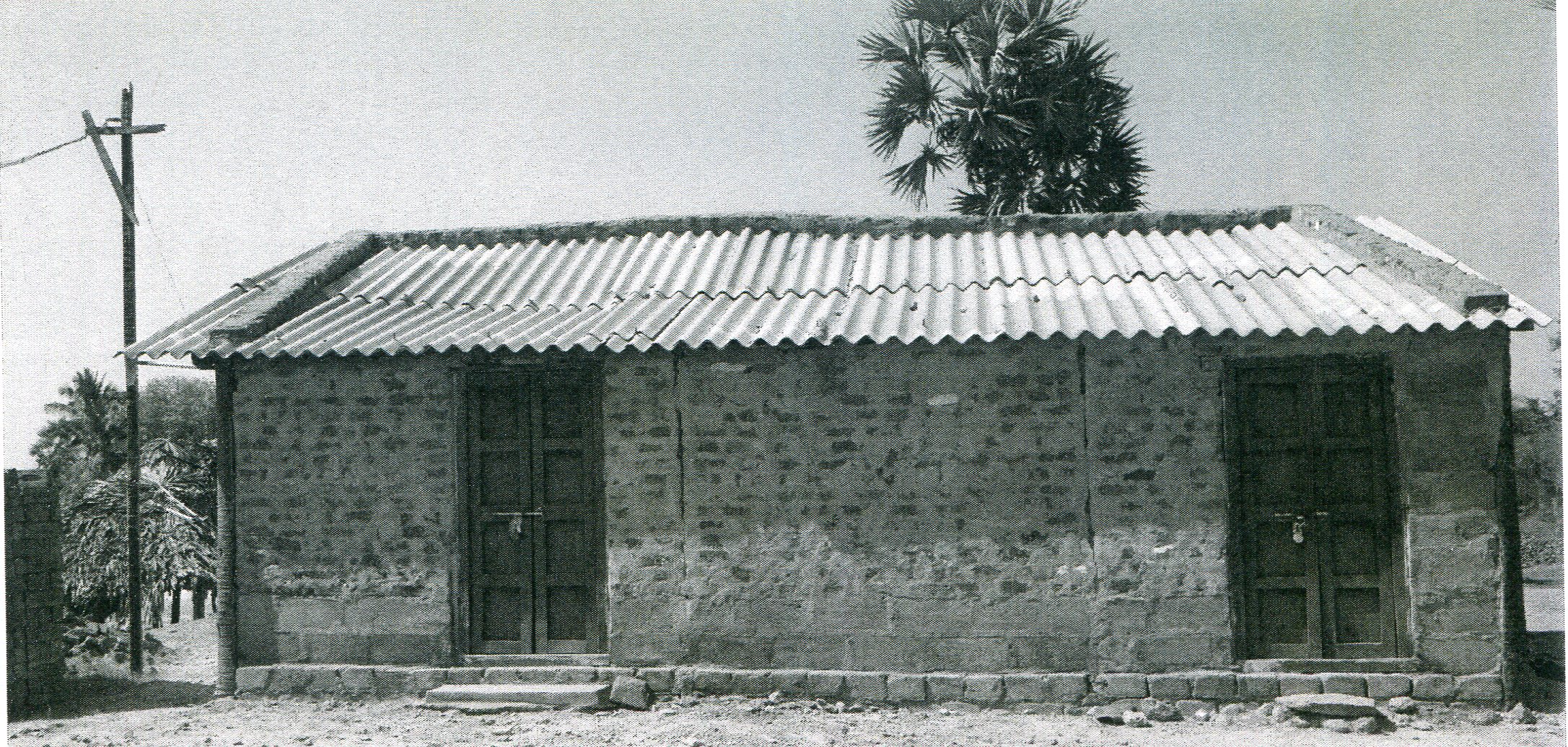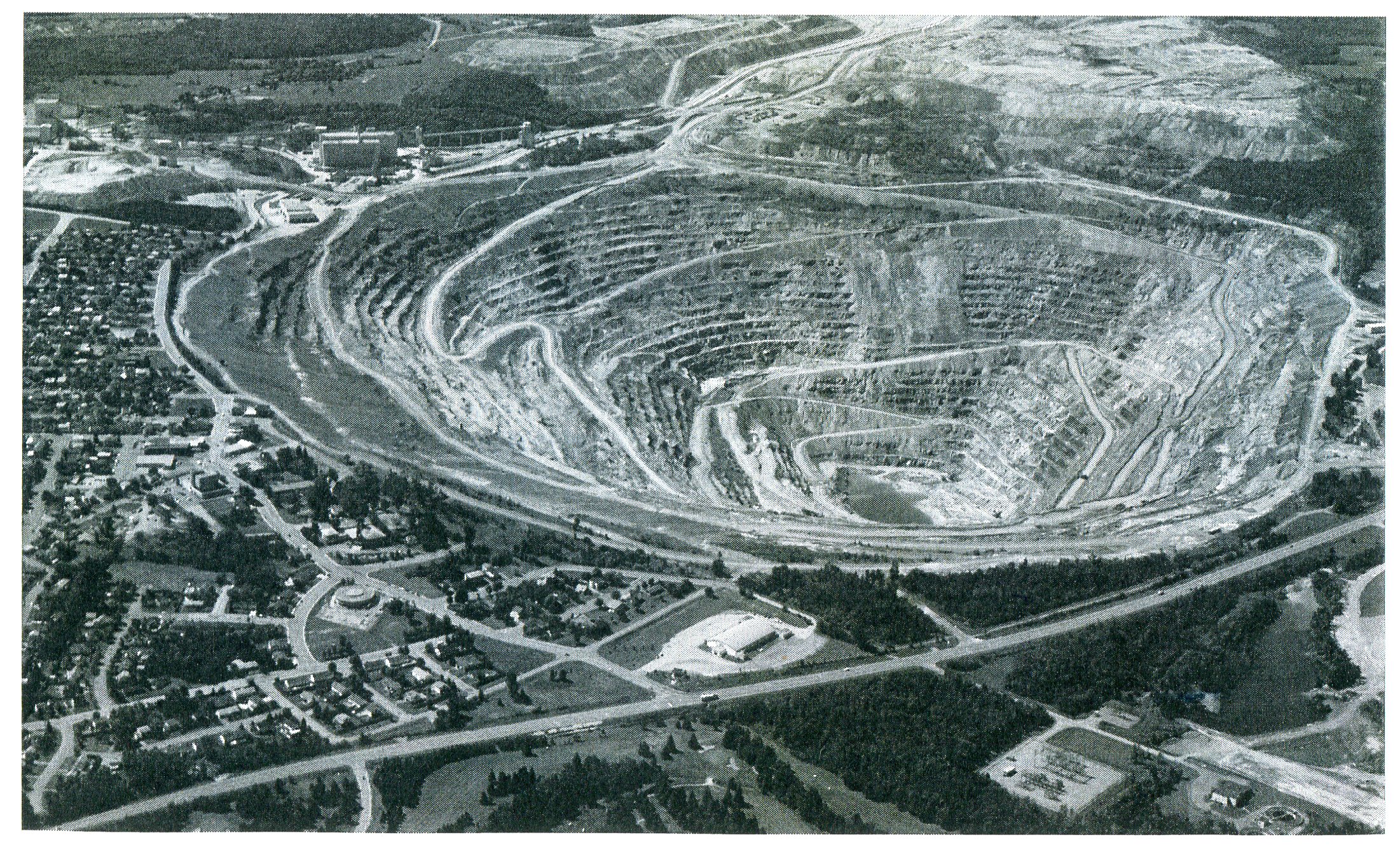
เหตุการณ์เพลิงไหม้อาคาร Grenfell Tower ใน London เมื่อมิถุนายน ปี 2560 ไม่ได้เกิดจากสาเหตุเดียว แต่เกิดจากสาเหตุหลายอย่างที่ทำให้ไฟไหม้ลุกลามอย่างรวดเร็ว โดยเฉพาะอย่างยิ่งวัสดุบุฉนวนความร้อนที่ทำจาก polyethylene ซึ่งเป็นผลิตภัณฑ์ที่ได้จากกระบวนการกลั่นน้ำมัน ซึ่งเป็นวัสดุติดไฟได้ หากมีการใช้วัสดุฉนวนที่ทำจากแร่ใยหินไครโซไทล์ ซึ่งมีราคาที่ถูกและทนไฟกว่า จะไม่เกิดปัญหาเช่นนี้
——————————————————————————————————————-
How the Asbestos Hysteria Led to the Grenfell Tragedy
There was no single cause of the tragic 24-story Grenfell Tower conflagration in London. The British newspaper The Telegraph lists eight factors, including lack of dual staircases, lack of sprinklers both outside and inside, and sub-standard fire doors—none of which at this time appear to have violated the law. But nothing contributed more to the sheer speed of the spread, blocking both exits and preventing rescues, and hence the horrific death toll, than what’s called “cladding.” That’s a covering or coating on the structure.
According to The Telegraph, fire safety experts warned as much as 18 years ago that the cladding used on buildings such as Grenfell Tower—used to improve both energy efficiency and aesthetics—posed a deadly threat because it essentially turns a high-rise into a chimney, funneling the heat upwards. Why? Partly it’s “breathing space” between cladding panels allowing oxygen to enter and partly because the cladding was made of aluminum and . . . polyethylene. “Ethyl” means a petroleum byproduct. And while petroleum byproducts may be good for heating and cooling insulation, petroleum burns.
For fire protection nothing beats asbestos
One expert described Grenfell’s cladding as a candle which is sandwiched between two sheets of metal. “To see a material in 50 minutes across an entire building take flame like this and allow the flame to move so quickly—well this material is quite dangerous and clearly doesn’t perform,” said another. Eyewitnesses reported the cladding actually wafting down in flames and striking people. There is polyethylene cladding more heat resistant than Grenfell’s, but it would have been slightly more expensive (by $2.55 per square meter) and hence bypassed in favor of the cheaper materials.
But before highly flammable materials were used, Grenfell employed another product that has been pilloried by environmental activists and media—one which could have mitigated if not prevented this tragedy. Asbestos.
For fire protection nothing beats asbestos. Although the Grenfell temperatures were so high as to cremate bodies (lack of identification being part of the tragedy), they would have had no effect on asbestos. Asbestos also very poorly conducts heat, important because sometimes heat conduction without a spark or flame can set a fire.
Asbestos is a curious fibrous rock that can be woven into materials, be it building insulation or gloves or suits that stunt men wear when you see an actor covered in fire. In hard form it can take the shape of bricks or other building materials. During WWII, it saved countless Allied lives as shipyard workers sprayed it into ship hulls. A torpedo or shell might rip through a hull or deck, but there’s nothing sailors feared more than fire that could continue killing after the initial explosion even as it made its way to the powder magazines.
Asbestos proved to be a known human carcinogen
Asbestos was used in almost every public and commercial building constructed before the 1980s in the United States. [Likewise for Canada.] As a fireproofing material, it was applied on steel beams and columns during construction of multistory buildings. Because of its strength, asbestos was added to concrete, asphalt, vinyl materials in roof shingles, pipes, siding, wall board, floor tiles, joint compounds and adhesives. Its heat-resistant qualities made asbestos the perfect thermal insulation. The material was also used in acoustical plaster and as a component of a mixture sprayed on ceilings and walls. In short, it was the miracle material of the building industry.
That’s according to an anti-asbestos site!
So what happened? In a word, hysteria.
Asbestos proved to be a known human carcinogen when inhaled, causing both lung cancer and a cancer almost always related to asbestos caused mesothelioma. It also causes lung-scarring called “asbestosis.” The asbestos connection to these diseases has been known for some time, but truly came to the public’s attention because of massive suffering in those poor shipyard workers. All three have an extremely long latency time, often decades, which makes them scarier to us. Nobody likes the thought of potentially being a ticking time bomb when there’s no way to stop or even delay the consequences.
But ignored in the furor were two vital aspects:
Those shipyard workers travailed every day in massive clouds of the stuff with absolutely no protection.
There’s a powerful correlation between lung cancer and asbestosis and cigarette smoking. “Among non-smokers, asbestos exposure increased the rate of dying from lung cancer 5.2-fold, while the combination of smoking and asbestos exposure increased the death rate more than 28-fold,” according to a 2013 study.
Trial lawyers, Environmental groups, Environmental regulators came up with the “single-fiber” theory of asbestos disease
Yes, many, though not most, of those shipyard workers would have contracted asbestos disease even without smoking. That’s not the point, though.
Point is that somewhere along the way trial lawyers, environmental groups, and environmental regulators came up with the “single-fiber” theory of asbestos disease. Namely that you didn’t need massive exposures nor outside contributors like cigarette smoking—that literally a single asbestos thread could lodge itself into the lungs and wreak havoc.
The proof for this? None. Pure theory. But a very convenient theory for a lot of interest groups.
Trial lawyers could file class-action suits to get a third or more of settlements of verdicts. Environmental groups could raise funds. Government regulators had something more to regulate even as in general the environment in advanced countries was becoming vastly cleaner and healthier.
Meanwhile the synergistic effect of asbestos exposure and cigarettes works against the single-fiber rule. Like a well-built medieval castle, the body has myriad layers of immune systems. Regarding inhalation for example, large particles may first be caught in nasal hairs and sneezed out. After that, inhaled particles need to work past the sticky mucous in the nose, mouth, throat, and lungs. All of these work to trap invaders and harmlessly push them out.
But as with the best medieval castles, the body’s defenses can be overwhelmed. Too many cannonballs against the ramparts in one place and the stones eventually collapse. Smoking several packs of cigarettes a day does the trick nicely, thank you. The role of so-called “second-hand smoke” has been grossly politicized, as I’ve written, but even there only a handful of activists claim that side stream tobacco is as harmful as multiple packs a day.
Asbestos and the single-fiber rule
Obviously inhaling clouds, literally clouds, of asbestos all day long for as much as four years is begging for the ramparts to collapse. But a single fiber? Really?
No. The evidence is quite powerful against the single-fiber theory, and it appears that in recent years courts have turned against it.
Yet early on it had great appeal. One beauty is that it’s impossible to prove whether exposure even took place. You can’t detect a single asbestos fiber in a lung. Moreover, we all have asbestos in our lungs because it is indeed natural and the winds eventually carry everything anywhere. You’ve inhaled molecules of poop from the blue wildebeest of sub-Saharan Africa. Yes, gnu!
But, granted, we probably also have some fibers in our lungs because of its industrial use. And so even someone who smokes like the proverbial chimney could, by this theory, have contracted lung cancer from industrially-used asbestos.
Thus today, in most advanced countries, asbestos is totally outlawed. The U.S. is a bit less draconian, still allowing the substance for gaskets, roofing materials, and a few other places where the risk of inhalation approaches zero.
But will it be resistant enough?
So in short order the wealthier countries first began forbidding installing new asbestos and then ordering the horrifically expensive “abatement” of that already present. Not to mention the potentially dangerous if the single-fiber rule were true because it’s impossible to prevent some accidental release. I fought the good fight against this, including an article in The Reader’s Digest in 1990, pointing out the simplicity of merely inspecting buildings and then covering exposed asbestos.
Too sensible. Government requirements led to systematic abatement from building after building and God help you if you had it in your house. Perhaps better to just abandon it in the middle of the night.
When I saw the date Grenfell Tower was built, 1974, I assumed the cladding was originally of asbestos, later ordered abated. And so it was.
Expect safety specifications in the U.K. to change, especially the replacement of the cladding with a variety more resistant to heat. But will it be resistant enough? Meanwhile, we have yet another tragic tale that hysteria kills. Too late for asbestos; it will never be brought back. But there’s always the hysteria that will beset us tomorrow…
Michael Fumento is an author, journalist, and attorney who has been writing on science and epidemic hysteria for over three decades.
Source link: https://canadafreepress.com/article/how-the-asbestos-hysteria-led-to-the-grenfell-tragedy
Please follow and like us:


